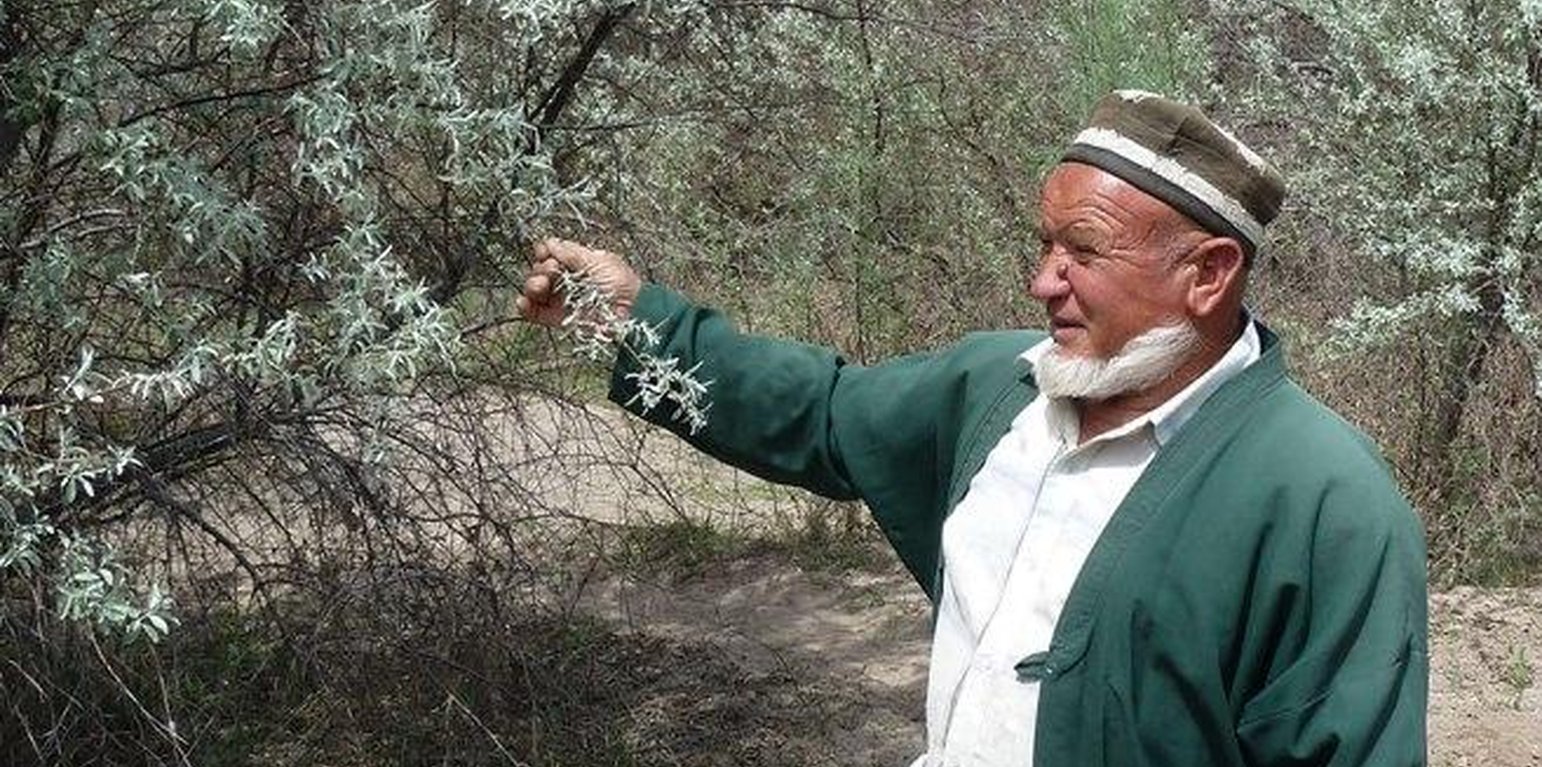Tugai forest management through village committees
(Tajikistan)
Description
The described approach facilitates the establishment of contracts between village committees and local authorities for decentralised management of Tugai forest areas on State Reserve Land.
Aims / objectives: Tugai forests are riparian forest ecosystems situated in the continental, winter-cold deserts of Central Asia. These flood plain forests are severely threatened by overexploitation for fire wood and by overgrazing. The 253 ha of Tugai forest in Nuri Vakhsh Jamoat along the Vakhsh river in southern Tajikstan were suffering due to their de facto status as open access resources. The district environmental department that was supposed to monitor the forest was unable to effectively carry out this work. Therefore the UNDP project on “Demonstrating Local Responses to Combating Land Degradation and Improving Sustainable Land Management in SW Tajikistan” saw the protection of this Tugai forest as a priority and engaged with local land users to help protect the forest.
Methods: UNDP project representatives held discussions with forest users living in villages next to to the Tugai forests, regarding the establishment of community-based forest management institutions. UNDP proposed that these institutions enter into agreement with the Hukumat (local district-level government) to protect and exclusively use well defined forest areas on nearby State Reserve Land.
Stages of implementation: As a first step, UNDP obtained permission from the Hukumat to conduct sanitary felling of dry and infected trees, to help improve the forest structure under supervision of the Jamoat (local municipality-level government). The removed tree material was distributed to schools and hospitals as fire wood. Next, a leasehold agreement was formed between a representative of each of the three village committees and the Hukumat. These leasehold agreements covered a total of 126 ha out of 253 ha of Tugai forest existing in the area and they are valid for five years. The remaining forest area, which is not under an agreement, is not threatened as it is situated on an island in the middle of a strong stream that cannot be crossed. The committee has to pay about or 1.73 USD / ha of leased forest land as a tax to the district. The tax paid is collected from contributions by members of the villages who pay for each head of cattle that they send for grazing at a cost of 1 USD / head of cattle.
Role of stakeholders: The village committees are headed by one representative who is responsible for regulating access to the forest plots. The local Jamoat supervises the activities carried out by the village committees on their respective plots. UNDP provides consulting services for the process of establishing contracts between village committees and the local authorities and is carrying out regular monitoring of the forest management activities.
Location
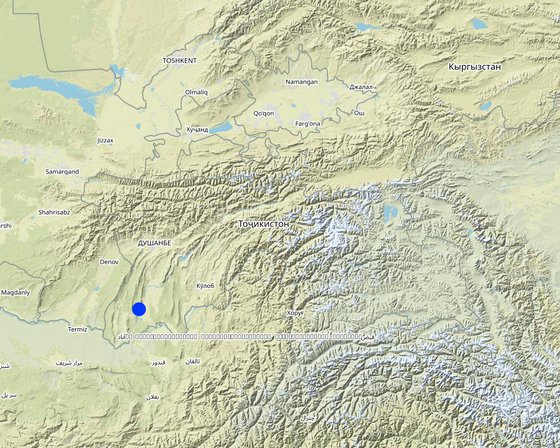
Location: Nuri Vakhsh Jamoat, Khatlon, Tajikistan
Geo-reference of selected sites
Initiation date: 2009
Year of termination: 2011
Type of Approach
-
traditional/ indigenous
-
recent local initiative/ innovative
-
project/ programme based
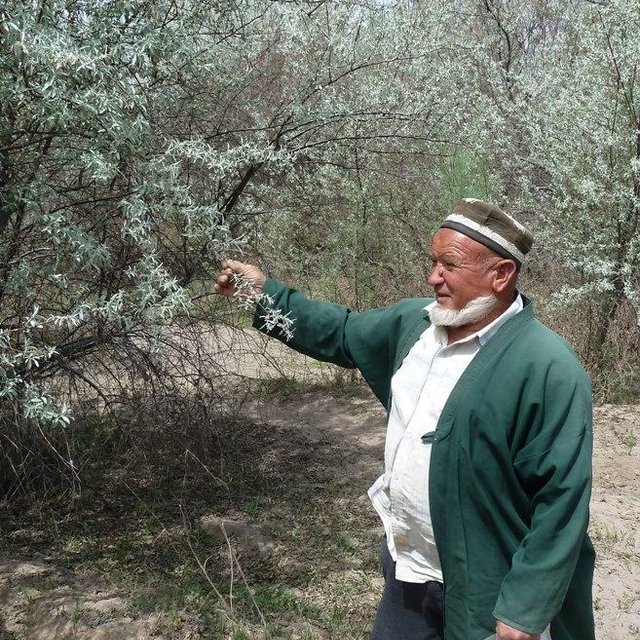
Village committee representative in his plot of Tugai forest (Julie Zähringer (PPCR Component A5, 131 Rudaki Avenue, Dushanbe))
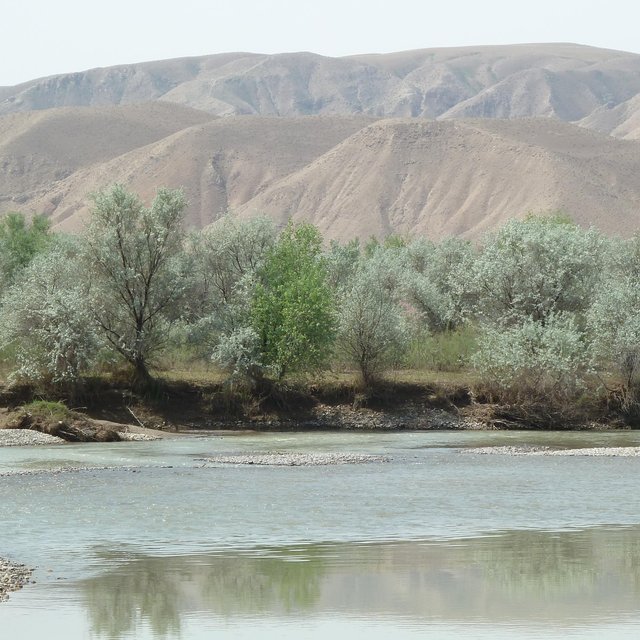
Riparian Tugai Forest Ecosystem (Julie Zähringer (PPCR Component A5, 131 Rudaki Avenue, Dushanbe))
Approach aims and enabling environment
Main aims / objectives of the approach
The Approach focused mainly on SLM with other activities (regulation of access for herders)
The main aim of the approach is to help prevent the degradation of Tugai forest, and the disappeareance of this threatened ecosystem, while giving the local population the chance to manage and use it in a sustainable way.
The SLM Approach addressed the following problems: uncontrolled access and degradation of Tugai forest, overgrazing, cutting of trees, no firewood resources available
Conditions enabling the implementation of the Technology/ ies applied under the Approach
-
Legal framework (land tenure, land and water use rights): The existing land ownership, land use rights / water rights moderately helped the approach implementation: As the land is classified as State Reserve Land, and is under the control of the forestry department within the Hukumat, the establishment of an agreement between village organisations and the Hukumat was possible.
Conditions hindering the implementation of the Technology/ ies applied under the Approach
-
Social/ cultural/ religious norms and values: lack of local level structures enabling collaboration between village organisations and Jamoat or Hukumat
Treatment through the SLM Approach: UNDP assistance and consulting to improve collaboration and enabling the establishment of leasehold agreements
-
Institutional setting: no implementation of control and punishment measures regarding the overexploitation of Tugai forest
Treatment through the SLM Approach: clearly defined rights and responsibilities for forest users and village and local government institutions
-
Legal framework (land tenure, land and water use rights): no defined forest use or management rights and responsibilities
Treatment through the SLM Approach: user agreement between village committees and district administration
-
Knowledge about SLM, access to technical support: overgrazing and overexploitation of Tugai forest for firewood
Treatment through the SLM Approach: the forest leasehold agreement defines that no cutting of trees is allowed during the first 5 years, apart from sanitary felling, and grazing is limited to a certain number of cattle
Participation and roles of stakeholders involved
Stakeholders involved in the Approach and their roles
| What stakeholders / implementing bodies were involved in the Approach? |
Specify stakeholders |
Describe roles of stakeholders |
| local land users/ local communities |
Representative of village committee and village committees
Village committees were all represented by men. |
|
| SLM specialists/ agricultural advisers |
UNDP consultants |
International experts designed the broad structure/framework of the approach, but the specific agreements were designed by village representatives, Hukumat, and the UNDP consultant. |
| national government (planners, decision-makers) |
District administration |
|
| international organization |
UNDP |
|
Lead agency
UNDP
Involvement of local land users/ local communities in the different phases of the Approach
none
passive
external support
interactive
self-mobilization
initiation/ motivation
Consultants from UNDP initiated the approach and started discussions with villages next to the forest
implementation
establishment of village committees, managing access for livestock herders
monitoring/ evaluation
monthly monitoring through UNDP consultant
Flow chart
UNDP facilitates the process of establishing contracts between village organisations and the Hukumat for decentralised forest management.
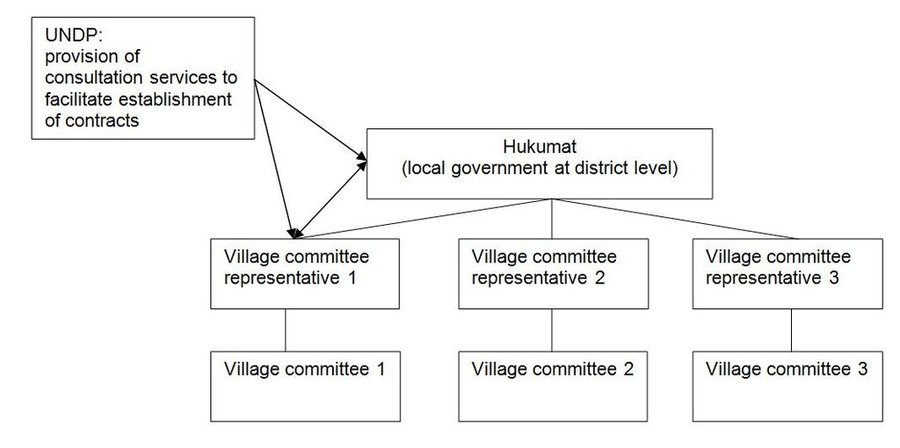
Author: Julie Zähringer (Baumackerstr. 51)
Decision-making on the selection of SLM Technology
Decisions were taken by
-
land users alone (self-initiative)
-
mainly land users, supported by SLM specialists
-
all relevant actors, as part of a participatory approach
-
mainly SLM specialists, following consultation with land users
-
SLM specialists alone
-
politicians/ leaders
Decisions were made based on
-
evaluation of well-documented SLM knowledge (evidence-based decision-making)
-
research findings
-
personal experience and opinions (undocumented)
Technical support, capacity building, and knowledge management
The following activities or services have been part of the approach
-
Capacity building/ training
-
Advisory service
-
Institution strengthening (organizational development)
-
Monitoring and evaluation
-
Research
Capacity building/ training
Training was provided to the following stakeholders
-
land users
-
field staff/ advisers
Form of training
-
on-the-job
-
farmer-to-farmer
-
demonstration areas
-
public meetings
-
courses
Subjects covered
forest conservation, sustainable grazing management, sanitary cutting
Advisory service
Advisory service was provided
-
on land users' fields
-
at permanent centres
Advisory service is quite adequate to ensure the continuation of land conservation activities; The forest leasehold agreements were established for a duration of 5 years. After this, the Hukumat should be in an adequate position to renew or adjust those agreements if necessary.
Institution strengthening
Institutions have been strengthened / established
-
no
-
yes, a little
-
yes, moderately
-
yes, greatly
Describe institution, roles and responsibilities, members, etc.
Type of support
-
financial
-
capacity building/ training
-
equipment
Further details
Jamoat
Monitoring and evaluation
bio-physical aspects were regular monitored by project staff through measurements; indicators: plant and bird species, number of cases connected with illegal cutting of trees
bio-physical aspects were regular monitored by project staff through observations; indicators: visual assessment of rehabilitation of grass, bushes and trees, number of wild animals and birds
There were no changes in the Approach as a result of monitoring and evaluation: None
There were no changes in the Technology as a result of monitoring and evaluation: None
Research
Research treated the following topics
-
sociology
-
economics / marketing
-
ecology
-
technology
Studies about presence of plant and bird species
Financing and external material support
Annual budget in USD for the SLM component
-
< 2,000
-
2,000-10,000
-
10,000-100,000
-
100,000-1,000,000
-
> 1,000,000
Precise annual budget: n.a.
Approach costs were met by the following donors: international (UNDP): 100.0%
The following services or incentives have been provided to land users
-
Financial/ material support provided to land users
-
Subsidies for specific inputs
-
Credit
-
Other incentives or instruments
partly financed
fully financed
agricultural: seeds
seeds for riverbank afforestation
costs associated with training and meetings
Labour by land users was
-
voluntary
-
food-for-work
-
paid in cash
-
rewarded with other material support
Other incentives or instruments
Jamoat
Impact analysis and concluding statements
Impacts of the Approach
No
Yes, little
Yes, moderately
Yes, greatly
Did the Approach help land users to implement and maintain SLM Technologies?
protection of biodiversity, improved fodder availability
Did the Approach empower socially and economically disadvantaged groups?
Did other land users / projects adopt the Approach?
the experience has not yet been disseminated
Main motivation of land users to implement SLM
-
increased production
-
increased profit(ability), improved cost-benefit-ratio
-
reduced land degradation
-
reduced risk of disasters
-
reduced workload
-
payments/ subsidies
-
rules and regulations (fines)/ enforcement
-
prestige, social pressure/ social cohesion
-
affiliation to movement/ project/ group/ networks
-
environmental consciousness
-
customs and beliefs, morals
-
enhanced SLM knowledge and skills
-
aesthetic improvement
-
conflict mitigation
-
well-being and livelihoods improvement
Sustainability of Approach activities
Can the land users sustain what hat been implemented through the Approach (without external support)?
The land users should now be in a position to renew contracts with the Hukumat.
Conclusions and lessons learnt
Strengths: land user's view
-
Protection of plant and animal diversity
-
Increasing the capacity of the community on legal issues
-
Aesthetic value of the beauty of this landscape - quote from land user responsible for a 41 ha forest plot 'Every morning when I open the window and I see the beautiful landscape of the Tugai forest I feel happy'
Strengths: compiler’s or other key resource person’s view
-
Protection of a highly endangered ecosystem, while allowing for improvement of grazing for local herders
Weaknesses/ disadvantages/ risks: land user's viewhow to overcome
-
no tenure security as the government could sell off the land at any time
issue land user certificates
Weaknesses/ disadvantages/ risks: compiler’s or other key resource person’s viewhow to overcome
References
Reviewer
-
David Streiff
-
Alexandra Gavilano
-
Joana Eichenberger
Date of documentation: April 27, 2011
Last update: Nov. 2, 2021
Resource persons
-
Firdavs Faizulloev (firdavs.faizulloev@undp.org) - SLM specialist
-
Firuz Ibragimov (firuz.ibragimov@undp.org) - SLM specialist
-
Julie Zähringer (julie_z60@hotmail.com) - SLM specialist
-
Najmiddin Abdurakhimov (najmiddin.abdurakhimov@undp.org) - SLM specialist
Full description in the WOCAT database
Documentation was faciliated by
Institution
- CDE Centre for Development and Environment (CDE Centre for Development and Environment) - Switzerland
- Central Asian Countries Initiative for Sustainable Land Management - Multicountry Capacity Building (CACILM - MCB) - Kyrgyzstan
- United Nations Development Program (United Nations Development Program) - Tajikistan
Project
- Pilot Program for Climate Resilience, Tajikistan (WB / PPCR)
